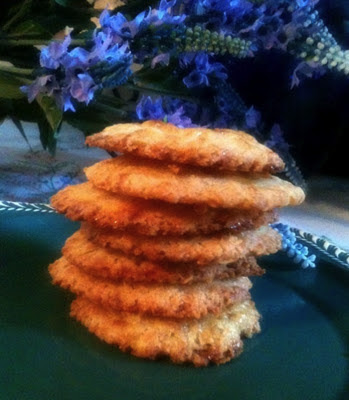 |
| Galettes au Fromage - Cheese Wafers |
Growing up with my mother, food was a major part of our lives. If we weren't making food or eating it, we were listening to the Yankee Kitchen Radio Show and obsessing over it. When the radio was off, the TV was on, and we were looking forward to watching The French Chef.
I loved watching Julia Child. At an early age, I understood that cooking standards were set by the French. Julia was clear and precise but never off-putting.
She would often launch into something surprising. I remember one episode when Julia was wiping food off the counter, she said something like this:
I am not throwing food on the floor. I have a waste basket under here to catch it.
People have written to me complaining that I throw food on the floor.
Don't they have anything better to do?
Watching Julia on TV, and standing next to my mother in the kitchen, I learned the basics of how to measure and sift dry ingredients, how to scald milk, fold in egg whites, hold a knife, dice an onion, and make a roux. I bought my mother Mastering the Art of French Cooking for Mother's Day when I was in my early teens. I still remember watching my mother make Julia's French Onion Soup starting with beef bones to make the stock.
My mother dedicated her life to cooking and pleasing her family through food.
Julia Child was a special part of that.
For an in-depth look at how Julia Child impacted all of us and television, here's a fascinating book by Dana Polan, Julia Child's The French Chef.
PBS is celebrating #CookForJulia! from August 5-15, 2012 to commemorate the 100th birthday of Julia.
Make one of Julia's recipes, take a photo of it, share your memories, and post it on the PBS website or Facebook.
Here's my contribution.
Tasty cheese wafers to enjoy at cocktail hour.
Recipe from Mastering the Art of French Cooking, published by Knopf in 1961,
Chapter Four: Entrees and Luncheon Dishes; Hors D'Oeuvres.
 |
| First attempt. Quite flat, a little dark, but definitely has that wafer look. |
 |
| Looking better with more flour. Puffed and golden at 10 minutes. |












